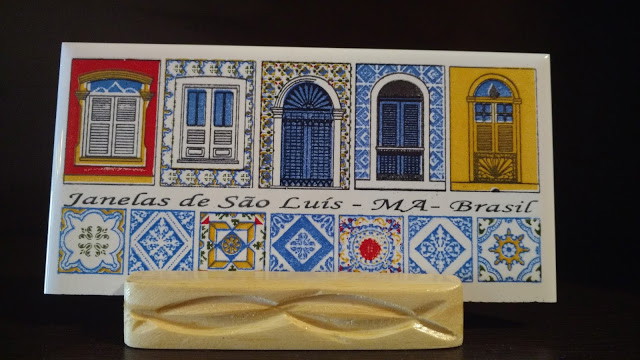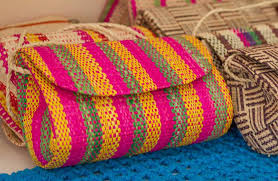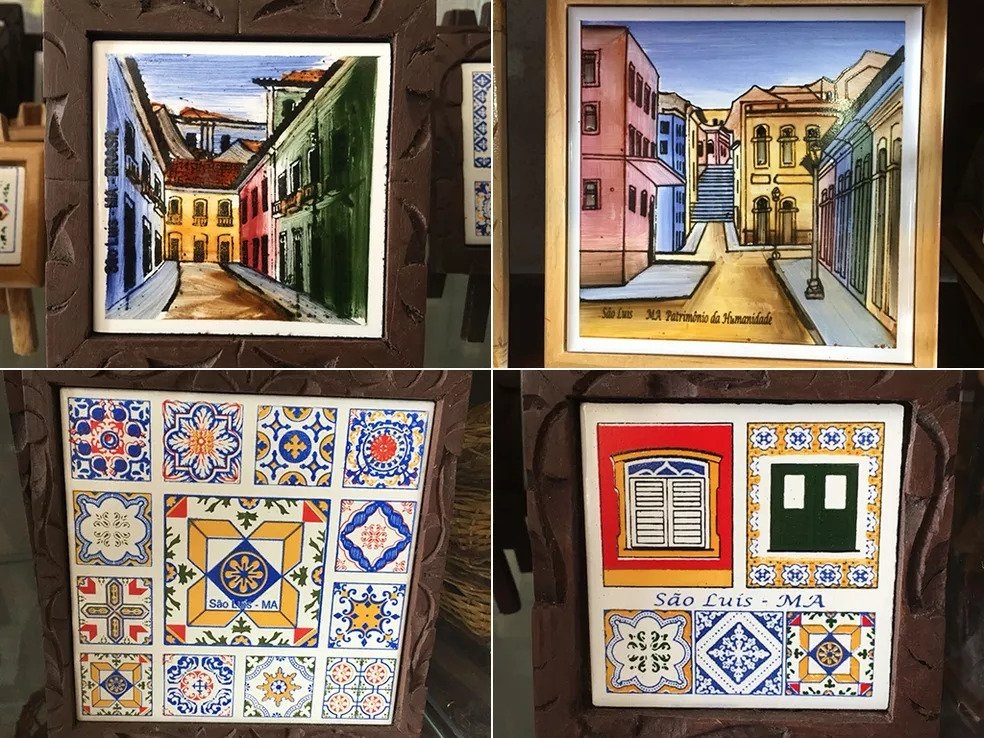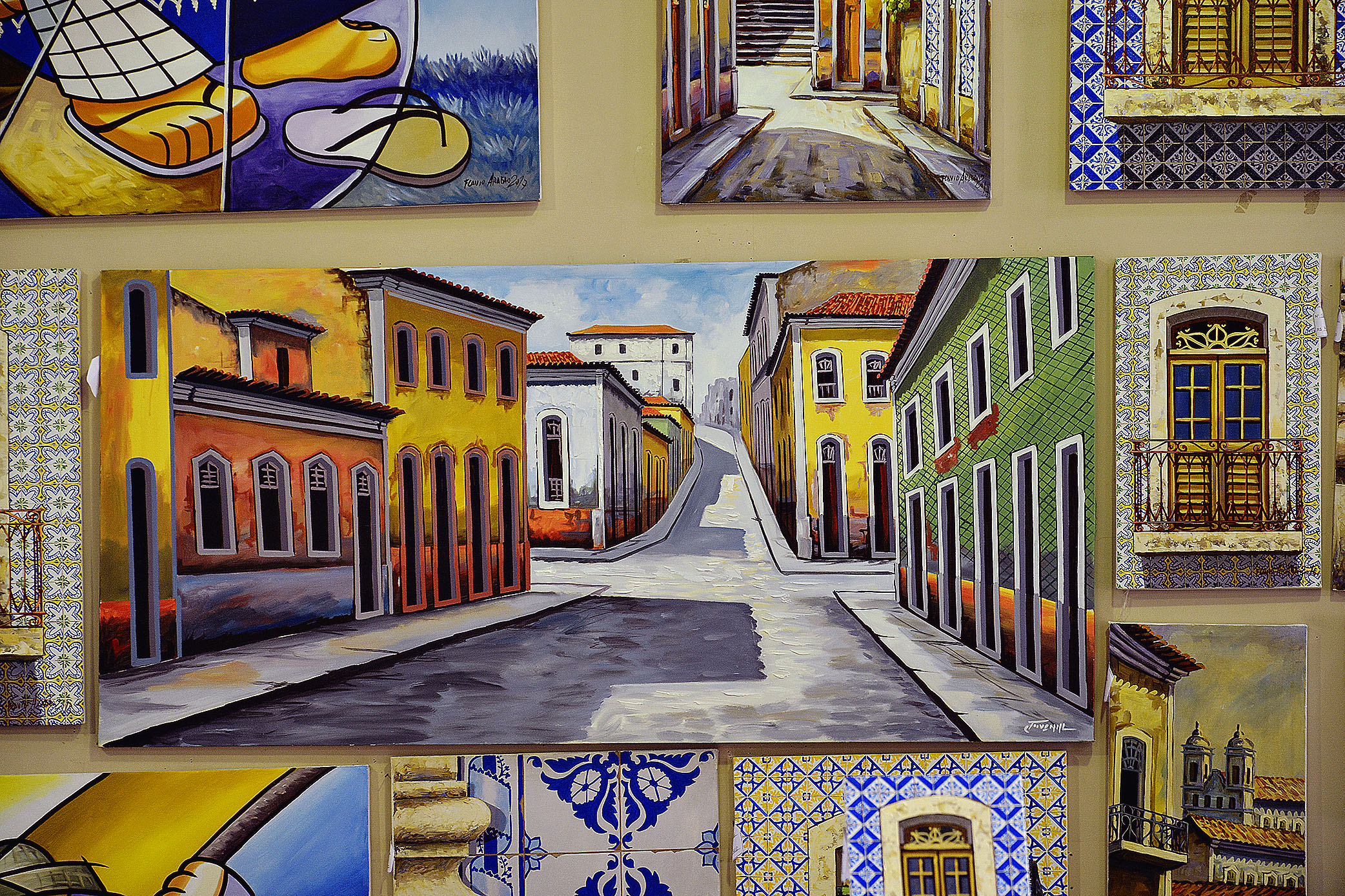Maranhão’s handicrafts have a rich tradition of more than 400 years, reflected in the variety of artifacts found in the historic centre of São Luís.
This handicraft production is characterised by creativity and innovation, elements that have been refined since the founding of the capital of Maranhão.

The wealth of handicrafts from the Northeast
The handicrafts of the Northeast of Brazil are an extremely rich artistic and cultural expression, influenced by different traditions and peoples. The pieces, techniques, materials and tools vary greatly from state to state, reflecting the region’s cultural plurality.
Symbols of the Maranhão culture

Artesanato maranhense se destaca pela diversidade
Handcrafted objects take on meaning and become symbols of Maranhão culture when they are transformed into new shapes and colours by the hands of local artists, inspired by icons of regional culture.
Among the most common raw materials are cotton, leather, wood, clay and vegetable fibres, of which buriti straw is the most widely used.
This versatile and strong fibre is the basis for a wide range of items sold in craft shops and markets.
Attractions in the Historic Centre of São Luís
A visit to the Historic Centre of São Luís is essential to appreciate the variety of artefacts that help tell the story of the capital.
Among the most sought-after items are the miniatures of the city’s typical characters and the “boizinhos”, delicate replicas of the bumba-meu-boi ox, which attract tourists at this time of year.
Other best-sellers are replicas of Portuguese tiles, which represent the city’s rich cultural heritage.

Featured Handicrafts
Tourists are also enchanted by straw baskets and bags, table decorations, ceramic statues and handmade drinks and sweets.
The handicrafts of the Northeast not only delight with their richness, but also celebrate the traditions and culture of São Luís.

Cultural representations in ceramics and tiles
Maranhão’s artisans depict important tourist attractions, such as Benedito Leite Square, Ribeirão Fountain and Praia Grande, using small or large pieces of tile.
The pieces reflect the architectural beauty of houses of Portuguese origin, with windows and doors also providing inspiration.
Using vibrant colours, the artisans reproduce the designs of colonial mansions, highlighting the historical importance of São Luís do Maranhão.



The popularity of ‘namoradeiras’ dolls
The ‘namoradeiras’ dolls have their origins in the popular traditions of Brazil, especially associated with the state of Bahia, where they were first created.

These dolls are called “namoradeiras” because they represent women in poses that suggest they are waiting for a suitor or “dating”.
Traditionally made from simple materials such as clay or cloth, they are often hand-painted and have features that express the culture and daily life of the region.
The popularity of ‘namoradeiras’ dolls in Maranhão is due to several factors:
- Popular culture: Northeastern culture is rich in tradition and artistic expression, and the flirtatious dolls fit well into this context, symbolising femininity and waiting for love, common themes in local narratives.
- Handicraft fairs: The growing appreciation of handicrafts and local productions at fairs and markets, such as the Maranhão Handicraft Products Marketing Centre (Ceprama), has contributed to the spread of these dolls. They are now considered a typical souvenir of the region, attracting tourists and locals alike.
- Adaptation and innovation: Maranhão artisans have adapted the namoradeiras, incorporating elements of local culture such as typical clothing and accessories, making them even more attractive and representative of Maranhão’s cultural identity.
- Tourism: The growth of tourism in São Luís and other parts of Maranhão has also contributed to the popularity of namoradeiras. Visitors are looking for souvenirs that represent the local culture, and the dolls have become an icon of this search.
Thus, the ‘namoradeiras’ dolls not only represent a tradition that originated in other parts of Brazil, but have also become a symbol of Maranhão culture, reflecting the creativity and identity of local artisans.
Adapted and valorised in the context of tourism, they have won a special place in the hearts of Maranhão’s inhabitants and visitors alike.
Maranhão’s popular culture in handicrafts
Local handicrafts not only reflect aspects of Maranhão’s culture, but also make the most of the raw materials available in the state.
Babassu straw, for example, is used to make bags that are a hit with tourists.

Bumba-meu-boi, a popular game in Maranhão, is also represented in miniatures and accessories, attracting visitors from all over Brazil and the world.
Ceprama: The heart of Maranhão handicrafts
The Centro de Comercialização de Produtos Artesanais do Maranhão (Ceprama), inaugurated in 1891, is a space that houses a permanent fair of genuine Maranhão crafts.
Covering an area of 4,107 m², Ceprama has 38 stalls offering a wide variety of products, from buriti fibre items to regional drinks and clothing from the June groups.

Visitors have the opportunity to watch the artisans at work, making the experience even more rewarding.
São Luís: the capital of tiles
Known as the capital of tiles, São Luís enchants all who visit.
The architectural complex, with mansions built in the 17th and 18th centuries, was declared a World Heritage Site by UNESCO in 1997.

Saiba como os azulejos de São Luís são feitos
This distinction attracts thousands of tourists every year, who come to discover the city’s cultural wealth.
Publicações Relacionadas
Music and Rhythms of the Brazilian Northeast
Rapadura continues in the daily life of the northeasterner to this day
Tropical flowers are grown on a large scale in northeastern Brazil
Cultural Aspects of the Northeast Region of Brazil
Northeastern architecture marked by typical features of colonial structures
Biografia de Jorge Amado
History of the Brazilian Northeast
Geography and Climatic Regions of the Brazilian Northeast
History of Carnival in Northeast Brazil
Influences and main dishes of northeastern cuisine
History and origin of Northeastern literature and biography of the main authors
José Américo de Almeida left Paraíba to revolutionize northeastern literature
Tracunhaém and Its Rich Clay Handicraft Tradition
São Jorge dos Erasmos Sugar Mill: A Landmark in Brazil
History and evolution of the Trio Elétrico
Casa Grande & Senzala: The Work of Gilberto Freyre
Historic Towns in the Northeast: Explore the Past
Fine Arts in the Brazilian Northeast
This post is also on:
![]() Português
Português ![]() English
English ![]() Deutsch
Deutsch ![]() Español
Español ![]() Français
Français



















